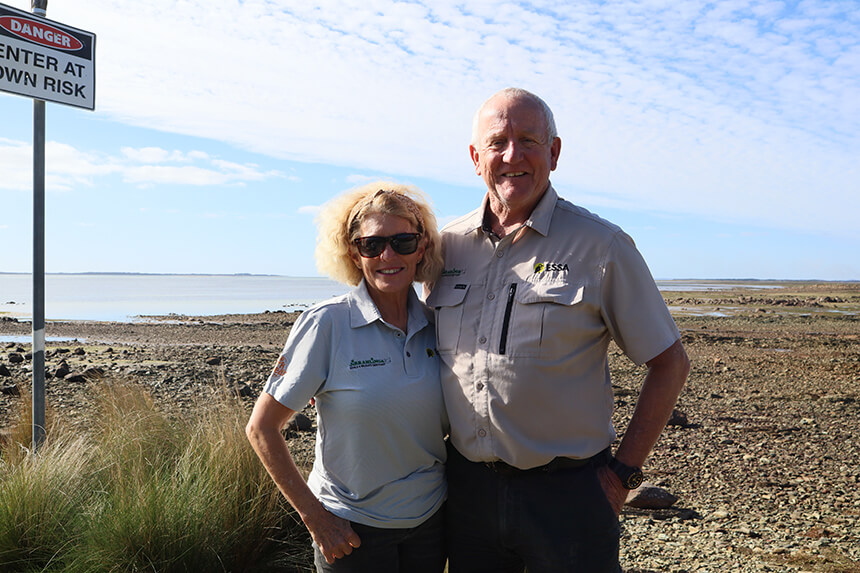Kevin Hughes BM, founder of Endangered Species Supporters Australia, is in Tasmania as part of a five year long country spanning mission to educate Australians about how they can help to protect our most vulnerable species. His goal, which he has set upon with wife Debrena, is self funded with the help of some sponsors who have supplied goods to support the project. Last week he conducted a study on Robbins Passage, he has his say about his findings here.
My wife and I departed Queensland on September 3, 2019 on a planned five year project informing Australians on how they can assist in helping our endangered native animals from extinction. I have researched areas of Australia that are critically vulnerable.
During my research before arriving in Tasmania, I found one very unique area, Robbins Passage. This passage is a one of a kind channel because of its east-west egress. This in itself is very rare within Australia.
This means the tidal flow can come from either end of the channel depending on winds, swell and the phase of the moon. A very rare collection of events and unique to this area of Tasmania and Australia.
It is estimated about one billion tons of water flow through the Robbins Channel with every tidal change. This again is a very unique event. The tidal change can reach four meters plus, making it the highest tidal change anywhere in Tasmania. This assists the ecosystem to rejuvenate.
The biodiversity in this area is one of a kind in this world of ours. Any interference made to the flow of this channel could greatly cause massive irreversible environmental damage.
Certain breeds of fish call the channel their home and use the area for breeding. Abalone and oysters could be greatly affected, if not destroyed. Salt marshes which again, are very unique to the passage may be destroyed. This in itself would be a devastating environmental disaster.
Salt marshes within Australia and especially the north west of Tasmania have been listed as a vulnerable ecological group.
Salt marsh wetlands perform important ecological functions that support a range of ecosystem services and biodiversity values. It is well known in scientific circles, the loss of these salt marshes would cause more nutrients entering the water and increasing the likelihood of a major algae bloom along with extreme erosion. Again this would be a major environmental disaster causing the destruction of thousands of homes of inhabitants in the channel and surrounding areas.
The Robbins Passage wetlands are known to have the largest diversity and density of resident migratory shorebirds in the state of Tasmania.
In excess of 25,000 shorebirds have been recorded. This clearly states this area supports more shorebirds than the rest of Tasmania.
The area is home to approximately 25 bird species. All but one species are from the northern hemisphere.
Two resident species, the Little Turn and the Hooded Plover are listed as endangered and vulnerable respectively, again making this channel area so environmentally important to the people of Tasmania and Australia as a whole.
When I look at the tide change from the shore line you can feel mother nature working at her best taking care of everything living on this planet including us humans. As humans, we form part of the ferris wheel of biodiversity. If anything is removed from that ferris wheel it can directly effect us.
It is the responsibility of the people of Australia to appreciate the Robbins Island Channel for what it is and help nurture it by looking after such a unique piece of mother nature.
In previous meetings throughout Australia, ESSA discuss how different communities can partake in preserving their critical habitats because if you choose not to, it will be gone forever.
